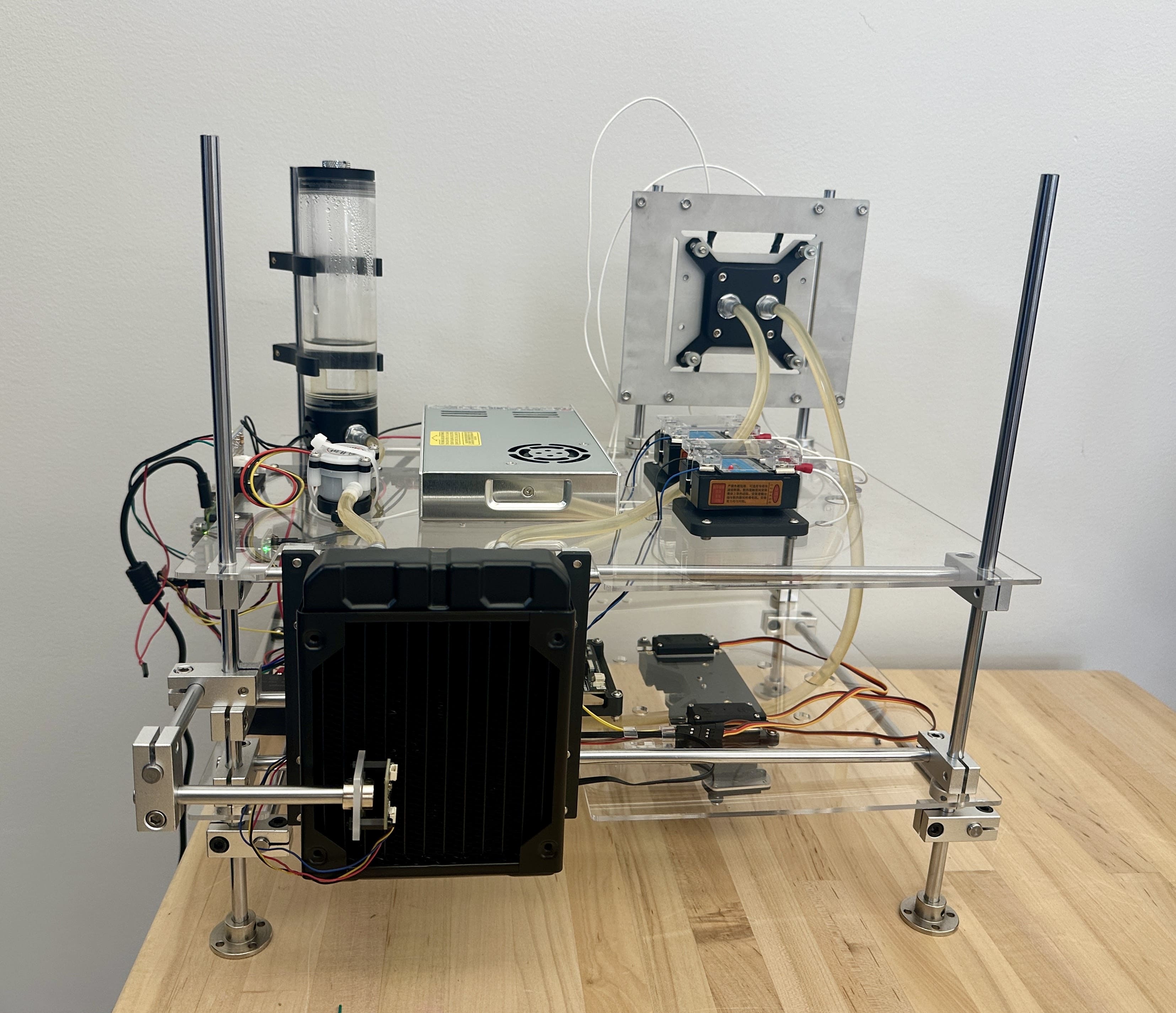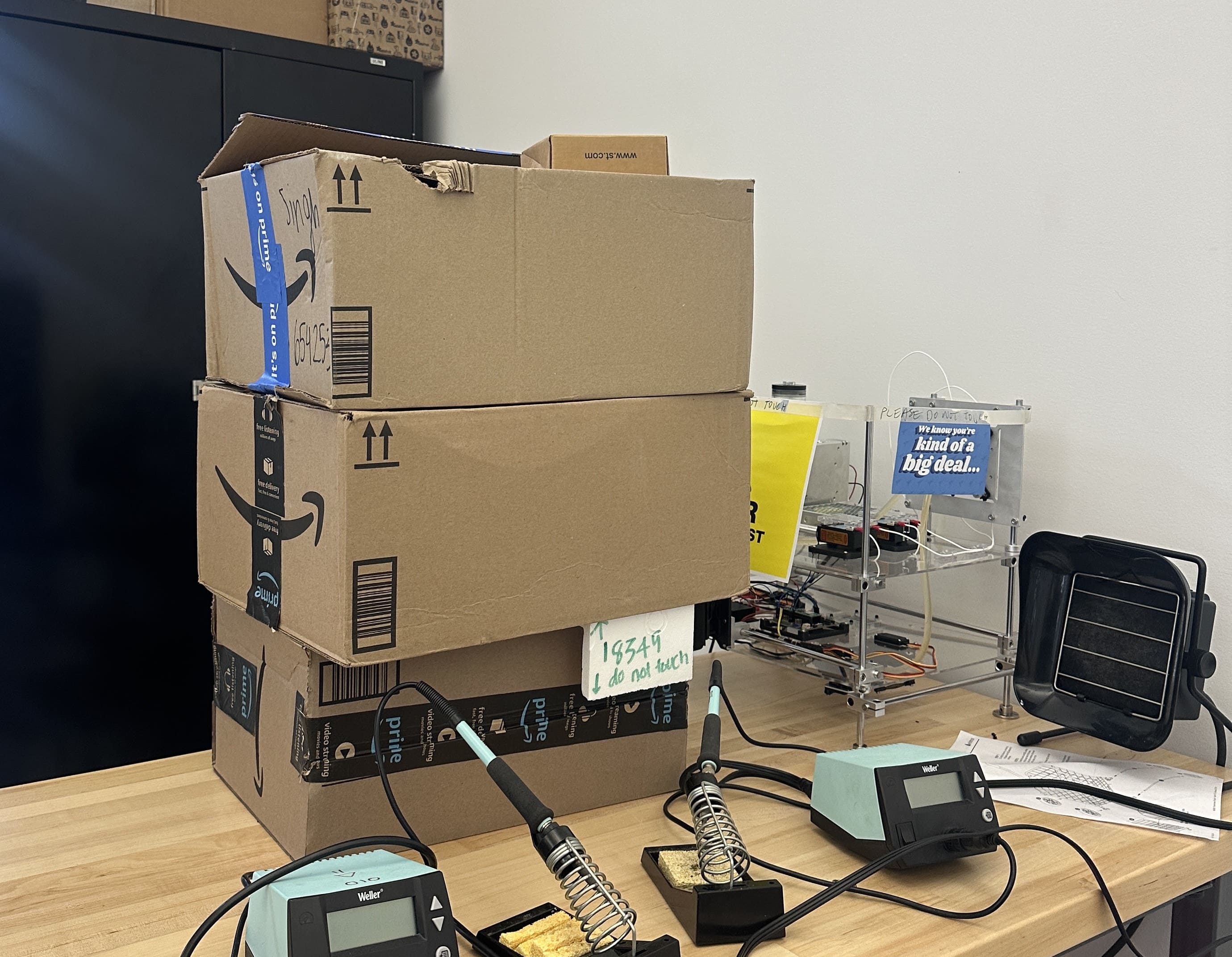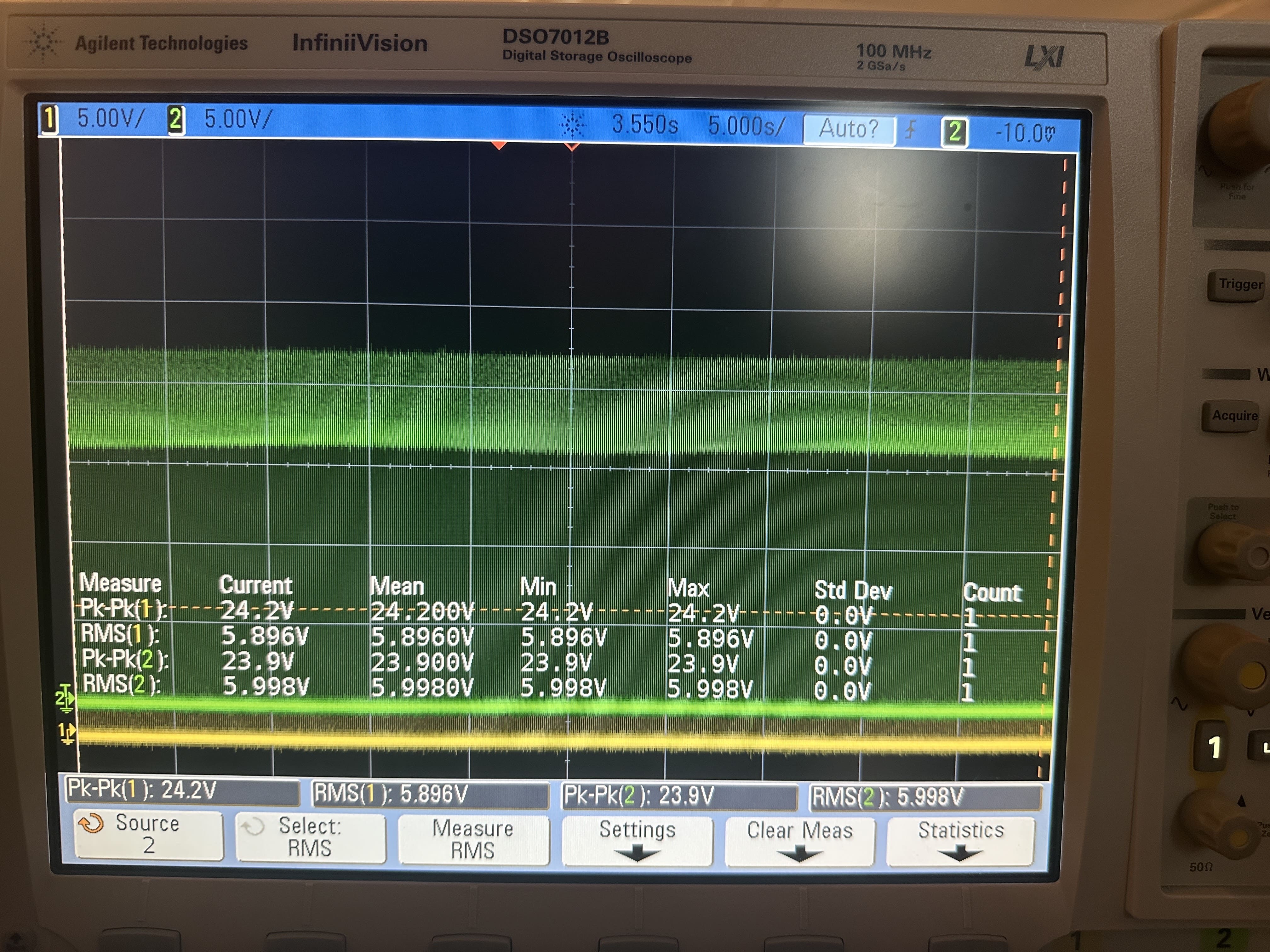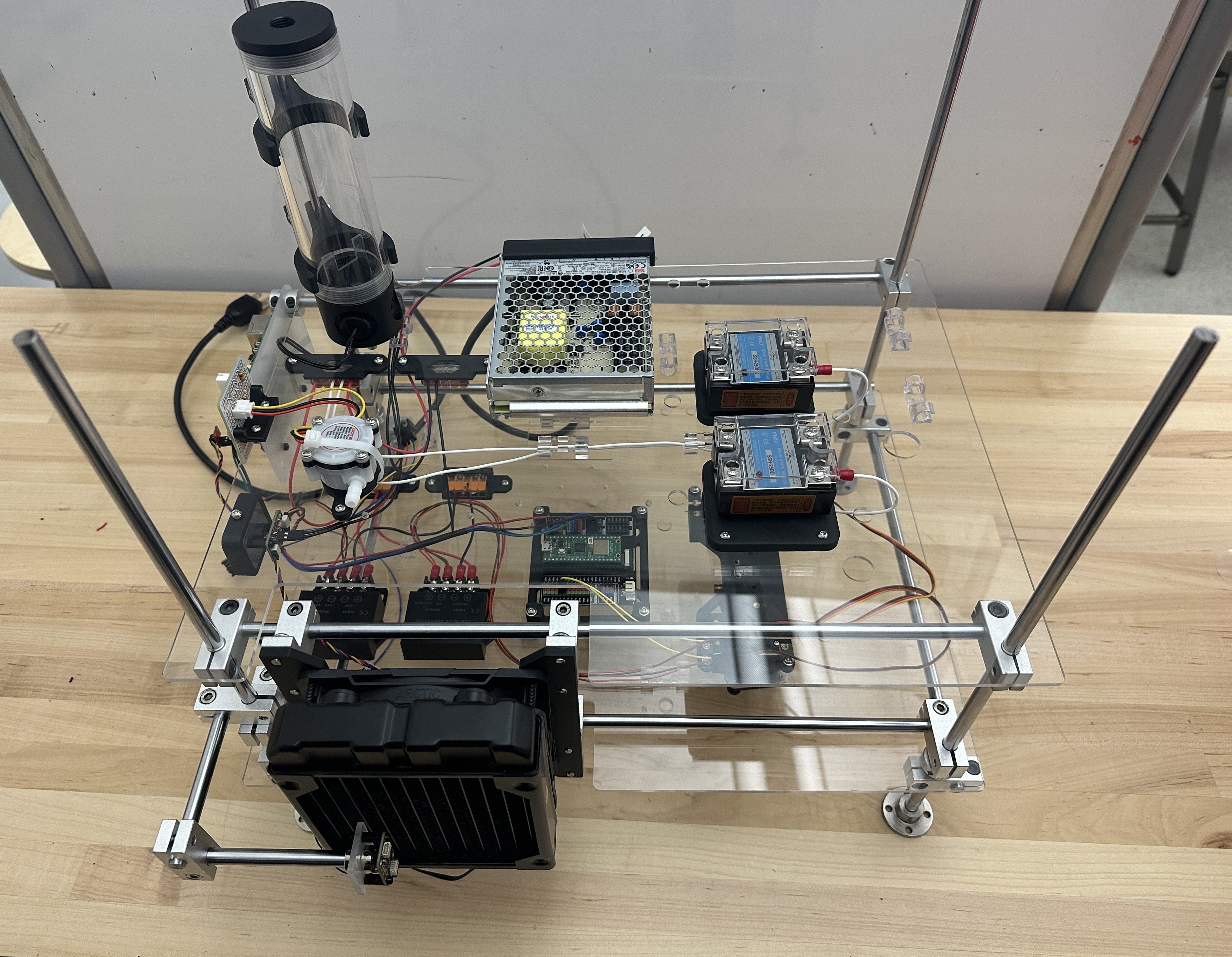Accomplishments
- Hardware Upgrades: Replaced previous PSU with higher-wattage power supply for full-load heater testing
- Testing & Data Collection: Began running automated test patterns including ramp up, ramp down, spike, and multi-level hold profiles
- Completed synthetic data collection patterns covering full power range (20-80W)
- CPU Power Trace: Collected power trace from a laptop using HWiNFO to generate realistic workload profile for testbed

Significant Risks
- Interference from Other Classes: Embedded systems class is storing large boxes directly in front of testbed’s intake fan area
- Obstructions may alter airflow, reduce heat dissipation, and affect temperature sensor readings
- Risk mitigation: Hope that embedded will move boxes soon

Design Changes
- No major design changes this week
Schedule Changes
- Project remains on track
- Synthetic data collection now complete for normal operation
- Running real traces






